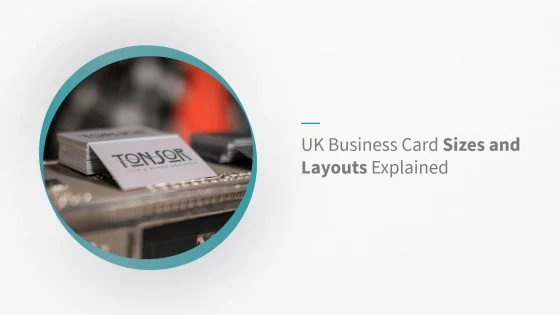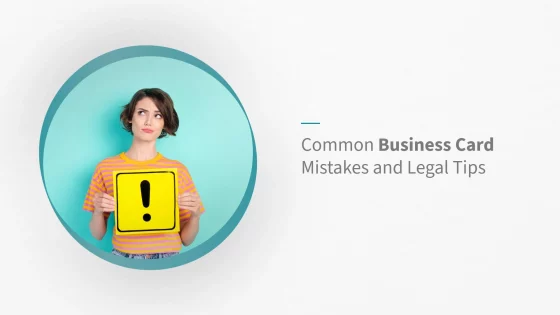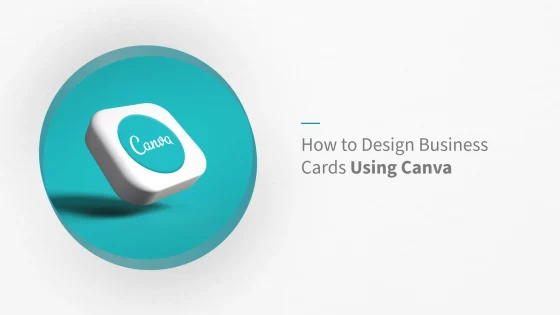UK Business Card Sizes and Layouts Explained
A professionally designed business card still plays a vital role in face-to-face networking—even in a world dominated by digital connections. Whether you’re attending a trade show, meeting potential clients, or simply introducing your brand, the right business cards size and layout helps you leave a strong and lasting impression.
This guide covers everything you need to know about UK business card dimensions and layouts in 2025, including standard sizing, international variations, pixel requirements, layout tips, and design trends that reflect your professionalism and creativity.
Standard UK Business Card Size and Dimensions
The most widely used business card size in the UK is 85mm × 55mm. This size fits comfortably into wallets, holders, and card cases—making it practical for networking across industries.
When designing for print, allow for bleed and internal safe zones to prevent trimming errors:
- Finished size: 85mm × 55mm
- Artwork with bleed: 91mm × 61mm (3mm on each edge)
- Safe zone: Keep key content 3mm inside the trim line
These guidelines ensure that background elements extend to the edge and essential content remains centred and readable.

Understanding Bleed, Margins and Print-Safe Areas
Printing requires extra space beyond the trim edge to account for cutting discrepancies. This is known as the bleed area, and it’s essential for full-bleed designs that reach the card’s edge without white borders.
- Bleed area: Extend backgrounds 3mm beyond each edge (total artwork size = 91mm × 61mm)
- Trim line: The cut edge of the final card (85mm × 55mm)
- Safe zone: Place logos, text, and contact details at least 3mm inside the trim to avoid accidental cuts
For sharp, consistent output, design using CMYK colour mode and set image resolution to 300dpi.
International Business Card Size Comparison
If your business operates globally, understanding international sizing standards helps maintain brand consistency across markets. While the UK typically uses 85mm × 55mm, dimensions vary worldwide:
| Region | Size (mm) |
|---|---|
| United Kingdom / EU | 85 × 55 |
| United States / Canada | 89 × 51 |
| Japan | 91 × 55 |
| Australia / New Zealand | 90 × 55 |
| Credit/Debit Card | 85.60 × 53.98 |
Most cardholders are designed to accommodate slight differences, but aligning your sizing to the recipient’s region ensures better fit and presentation.
Designing for Print: Pixel Dimensions and Resolution
Sharpness is essential for printed business cards. Adobe UK confirms that a resolution of 300 PPI (pixels per inch) is the recognised standard for high-quality print output, particularly on small-format items like business cards. Anything significantly below this—especially under 180 PPI—can result in visible blur or jagged edges.
To prepare your artwork correctly:
- Finished card size: 1004 × 650 pixels (corresponding to 85 × 55 mm at 300 PPI)
- With bleed: 1075 × 725 pixels (to match 91 × 61 mm including a 3 mm bleed margin)
Ensure that all photography and raster graphics meet or exceed the 300 PPI standard at actual print size. Using vector graphics for logos is recommended to maintain crispness during output.
Choosing the Right Fonts for Your Industry
Your font choice influences how recipients perceive your brand—long before they read a single word. Beyond readability, typography should reflect the tone and sector of your business. Here’s a general guide:
- Serif fonts (e.g. Times New Roman, Garamond): Reliable and traditional — ideal for legal, finance, and consultancy sectors.
- Sans serif fonts (e.g. Helvetica, Open Sans): Clean and modern — well-suited for tech, digital, and start-ups.
- Script or decorative fonts: Elegant and personal — appropriate for creative professionals, event planners, or boutique brands (use sparingly).
Always test fonts at actual print size to ensure legibility, especially when space is limited. Stick to a maximum of two font styles per card to maintain clarity.
How Different Professions Use Business Cards
Different industries call for different approaches when it comes to business card design. Tailoring your layout, stock, and content to your profession ensures your card reflects your unique brand while meeting practical needs.
- Freelancers & Creatives: Bold layouts, square or mini formats, and eye-catching colours help showcase individuality. A QR code linking to a portfolio adds further value.
- Consultants & Legal Professionals: Opt for traditional layouts with serif fonts on heavyweight silk or uncoated stock. Emphasise professionalism and clarity.
- Retail & Hospitality: Use uncoated or kraft stocks that double as loyalty or appointment cards. Mini cards are also popular as social or promotional tokens.
- Tech & Start-Ups: Portrait layouts and minimalist fonts give a modern feel. Incorporate NFC chips or QR codes linking to contact files or pitch decks.
- Event & Wedding Planners: Use decorative fonts, soft-touch coatings, or metallic finishes to match the aesthetic of your service.
Designing with your profession in mind ensures your business card feels intentional—not generic.
Popular UK Business Card Stocks and Finishes
Material and finish can say just as much as your design. Different paper stocks and coatings not only affect texture and durability, but also communicate your brand values. Here are some common UK options:
- Silk Coated (350–450gsm): A smooth, matte finish with subtle sheen — ideal for general business use.
- Uncoated: Easy to write on — popular for appointment or loyalty cards.
- Kraft board (457mic): Rustic and tactile — suits eco, craft or café brands.
- Recycled stock (350gsm): Environmentally responsible — great for green-conscious companies.
- Metallic or pearlescent (e.g. Ice Gold): Adds shimmer — ideal for events, luxury or creative industries.
For added visual impact, consider spot UV, embossing, debossing or foil stamping. Just be sure to follow your printer’s artwork guidelines when using these special effects.

Distribution Tips and Business Card Etiquette
Knowing when and how to share your business card is just as important as what’s on it. A great card can start a conversation or cement a new connection when used thoughtfully.
- Be prepared: Always carry a few cards in a clean holder to avoid damage.
- Be selective: Share your card at the end of a conversation or when someone expresses interest—not immediately.
- Exchange cards: Ask for the other person’s card in return—it shows interest and encourages mutual contact.
- Follow up: Use LinkedIn or email to reconnect and build rapport after exchanging cards.
- Think creatively: Include cards in orders, packaging, event giveaways, or even as tags for products.
Keep your cards updated. Outdated information can undermine the professionalism you’re aiming to project.
Printed vs Digital Business Cards: When to Use Each
As business networking evolves, many professionals are combining printed and digital cards to cover all touchpoints. Understanding when each format works best can help you stay prepared and professional in every setting.
- Printed Cards: Best for in-person events, trade shows, retail packaging, and referrals. They offer a tactile brand experience and work well in face-to-face introductions.
- Digital Cards: Useful for virtual meetings, quick follow-ups, email signatures, and remote networking. They can be shared via link, QR code, or NFC tag embedded in a device or card.
- Hybrid Strategy: Include a QR code on your printed card linking to a full digital version—such as a LinkedIn profile, online portfolio, or vCard download.
Using both formats ensures you’re ready to connect with contacts, no matter where you meet them. Learn More.
Final Artwork Checklist for Print-Ready Business Cards
Before sending your design to print, double-check these essentials to avoid costly errors:
- Artwork size: 91mm × 61mm (includes 3mm bleed on all sides)
- Safe zone respected: Text/logos at least 3mm from the trim edge
- File format: PDF with bleed and crop marks
- Resolution: 300dpi for all images and logos
- Colour mode: CMYK, not RGB
- Text outlined or embedded: Prevents font substitutions during printing
- Check contrast: Ensure all text is readable against background colours
Print a sample on your office printer to double-check design scale and spacing before committing to a final run.
Conclusion: Create a Card That Represents You
Your business card isn’t just a contact method — it’s a reflection of your brand, professionalism and attention to detail. By understanding UK sizing standards, international variations, and layout best practices, you’ll be equipped to create a card that makes the right impression.
Choose a format and material that suits your sector, and follow proven design rules to ensure it’s legible, memorable, and ready for print. Whether you’re handing it over at a networking event or slipping it into a package, a great card can open new conversations and strengthen brand perception.
Ready to design a business card that represents your business with clarity and confidence? Start customising your business stationery today with professional templates, premium finishes and expert print support.


